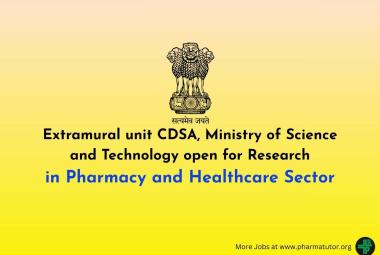About Author:
Urmila Moyal
NIMS Institute of Pharmacy, NIMS University,
Shobha Nagar, Jaipur (Rajasthan)
urmilamoyal@gmail.com
Abstract:
The study was designed to evaluate antidiabetic activity of ethanolic and aqueous seed extracts of Gynocardia Odorata roxb.in streptozotocin induced diabetes in 2 days old pups models. The seeds were collected, authenticated and shade dried. Shade dried seeds were then grinded into coarse powder and processed for further studies. Ethanolic and aqueous extracts were prepared and the phytochemical screening was performed. Ethanolic and aqueous both extracts were evaluated for the antidiabetic activity by using the streptozotocin induced diabetes in 2 days old pups model. After 3 months of streptozotocin administration pups become diabetic then different treatment were given to animals. After 3 weeks treatment estimation of biological parameters like serum glucose, cholesterol and triglyceride were performed and body weight, water intake and food intake were also recorded. Histopathological study was performed to study the structure of islets of pancreas in different group of animals. After 3 weeks treatment of ethanolic and aqueous extracts, when the biological parameters i.e. serum glucose, cholesterol and triglyceride were estimated and compared with diabetic untreated group there was a significant decrease were observed. Treatment also reversed the loss of body weight and increased demand of food intake and water intake when compared with diabetic untreated group. From the above study we concluded that both ethanolic and aqueous, seed extracts of Gynocardia Odorata roxb.have antidiabetic activity, but the aqueous extract of Gynocardia Odorata roxb.showed more significance then ethanolic extract.
[adsense:336x280:8701650588]
REFERENCE ID: PHARMATUTOR-ART-1669
Introduction:
Diabetes:
Diabetes mellitus is a disease characterized by chronic hyperglycaemia and glucosuria produced by an absolute or relative insufficiency of insulin. The ailment may result into the development of further metabolic and anatomic disturbances among which is lipemia, hypercholesterelaemia, loss of weight, ketosis, arteriosclerosis, gangrene, pathologic changes in the eye, neuropathy, renal disease and coma.1,2Hyperglycaemia and glucose intolerance are common manifestations of several types of hormonal disturbances or imbalances, of which the most important is diabetes mellitus.3 This disease is the seventh leading cause of death in the world. Weight Loss which is one of the clinical features of diabetes mellitus may be due to the degeneration of the adipocytes and muscle tissues to make up for the energy lost from the body due to frequent urination and over conversion of glycogen to glucose. Weight loss is a very serious issue in the management of diabetes mellitus.4,5
Though different types of oral hypoglycemic agents are available along with insulin for the treatment of diabetes, there is an increased demand by patients to use natural products with antidiabetic activity.6Since time immemorial, patients with non-insulin dependent diabetes have been treated orally by folk medicine, with a variety of plant extracts. In India, a number of plants are mentioned in ancient literature (Ayurveda) for the treatment of diabetic conditions.
Gynocardia Odorata is a very large East Indian tree. The leaves are glossy, entire, and alternate. The flowers are yellow and sweet-scented. The fruit is round, ash-colored, and when mature, averages in weight from 10 to 20 pounds. The numerous seeds are imbedded in its pulp, and contain oil, which, according to Roxburgh, is mixed with fresh butter, and used by the natives as a remedy for cutaneous diseases. It is known as Chaulmoogra (or Chaulmugra), and are said, when powdered, to have been used with advantage in scrofula, skin diseases, and rheumatism, the dose being about 6 grains. The seeds are grayish, irregularly ovoid, compressed, and angular and smooth, a little over an inch long, and have an oily taste and a peculiar, nauseous odor.Gynocardia odorata is a medicinal plant growing wildly throughout India and tropical countries of the world.7,8,9
Materials and Methods:
Plant Material:
The dried seeds of Plant Gynocardia Odorata were procured from Crude Drug Supplier in Delhi and authenticatedby Dr. Zea Ui Hasan Botanist, Saifia College of Science, Bhopal.The seeds were then shade dried and grinded and made a coarse powder and the coarse powder were used for further studies.
Preparation of Extract:
Plant Material:
The driedseeds of Plant Gynocardia Odorata were procured from Crude Drug Supplier in Delhi and authenticatedby Dr. Zea Ui Hasan Botanist, Saifia College of Science, Bhopal.The seeds were then shade dried and grinded and made a coarse powder and the coarse powder were used for further studies.
Preparation of Extract:10
Extraction was done according to standard procedures using analytical grade solvents. For ethanolic extract 250 gm. powdered seed was taken in a pouch of filter paper and kept inside the soxhlet thistle then it was extracted with petroleum ether for 48-72 hours for defatting after that it was extracted with ethanol (99.9%) for 48-72 hours. Aqueous extract was separately prepared by maceration process. The extracts were then concentrated until dryness under reduced pressure and controlled temperature (40-50ºC). .The % yield of ethanolic and aqueous extracts was found to be 7.2% and 10.3%. Then Preliminary Phytochemical screening was performed. Furthermore, the dried ethanolic and aqueous extracts were used for evaluation of Pyrexia activities.
[adsense:468x15:2204050025]
Preliminary Phytochemical Screening:
The extracts were subjected to preliminary phytochemical qualitative screening to evaluate the presence of various primary or secondary metabolites following standard procedures. In Previous phytochemical studies the presence of phytoconstituents such as Flavonoids, Tannins, Proteins, Alkaloids, Saponins and Triterpenoids were already reported.11
Experimental Animals:
Evaluation of antidiabetic activity was done by using streptozotocin induced diabetes in 2 days old pups model, in which 2 days old pups of wistar rats were used and the animals were maintained under standard laboratory conditions with access to standard diet and water ad libitum. The experiment was carried out according to the Committee for the purpose of Control and Supervision of Experiments on Animals (CPCSEA) guidelines.12 Before starting experimentation on test animals, permission of Institutional Animal Ethics Committee (IAEC) was obtained.
Acute toxicity study:
Acute oral toxicity studies were performed according to OECD no. 423 guidelines. Three rat and mice of either sex were selected for the study. The animals were fasted over night for food with free access for water prior to test extract. Gynocardia odorata roxb. aqueous and ethanolic extracts were administration orally up to dose 2000 mg/kg. Individual animal was observed after dosing at least once during first 30 min., periodically during 24 hrs. with a special attention given during the first 4 hrs. and daily thereafter, for a 7 days.13
Streptozotocin Induced Diabetes in 2 Days Old Pups:14
2 days old pups of Wistarrats weighing 7-10 gm were used to induce non-insulin dependent diabetes mellitus in this study. A freshly prepared solution of streptozotocin (90 mg/kg) in 0.1 mol/L citrate buffer, pH 4.5, was injected intraperitoneally to 2 days old pups. Vehicle control group of pups were receive only saline. The animal were weaned at 30 days and after a period of 3 months they were checked for fasting glucose level to confirm the status of NIDDM. Animals showing fasting glucose level > 140 mg/dl were considered as diabetic. The pups that receive saline considered as control animals.
Treatment Protocol:
The experimental animals were divided into five groups of six animals each. Group I was served as Vehicle control and treated with normal saline, Group II was served as Diabetic untreated group, Group III having diabetic animals treated with the Ethanolic extract of Gynocardia odorata roxb. at a dose of 100 mg/kg, Group IV having diabetic animals treated with aqueous extract of Gynocardia odorata roxb. at a dose of 100mg/kg and Group V having diabetic animals and treated with Standard drug glibenclamide at 10 mg/ kg body weight)
Treatment was given daily for 3 weeks. At the end of 3 weeks treatment the animals were kept on 12 h. fasting and blood samples were collected from tail vein and analyzed for serum glucose, cholesterol and triglyceride level. Body weight, water intake and food intake were also being recorded.
Statistical Analysis:
The significance of difference among the control group and various treated groups were analyzed by means of one-way ANNOVA followed by Dunnett’s multiple comparison tests. The experimental results are represented as ± SEM (standard error mean).
Histopathological Studies:
For Histopathological studies animals were sacrificed at the end of 3 weeks treatment, after the collection of blood sample pancreas was removed and washed with normal saline and preserved in 10% formalin, processed and stained with hematoxylin and eosin.
NOW YOU CAN ALSO PUBLISH YOUR ARTICLE ONLINE.
SUBMIT YOUR ARTICLE/PROJECT AT articles@pharmatutor.org
Subscribe to Pharmatutor Alerts by Email
FIND OUT MORE ARTICLES AT OUR DATABASE
Result:
The preliminary phytochemical screening of the ethanolic and aqueous extracts of the plant Gynocardia odorata roxb. showed the presence of phytoconstituents such as Flavonoids, Tannins, Proteins, Alkaloids, Carbohydrates Reducing Sugars, Phytosterols, Saponins and Triterpenoids.
Pups that received saline were considered as control animals, ethanolic, and aqueous seed extracts of Gynocardia odorata roxb.were used for the experiment and glibenclamide (10 mg/kg b.w. p.o.) for three weeks was used as standard drug for the group V.
STZ at a dose of 90mg/kg has caused the elevation of serum glucose (180.30± 0.6890), serum cholesterol (81.60±0.Administration of (Streptozotocin 90mg/kg: i.p.) to the 2 days old pups caused diabetes in male wistar rats it was confirmed at the end of 3months when they were checked for (fasting glucose level>140 mg/dl). Pups that received saline were considered as control animals, ethanolic, and aqueous seed extracts of Gynocardia odorata roxb. were used for the experiment and glibenclamide (10 mg/kg b.w. p.o.) for three weeks was used as standard drug for the group-V the STZ (90mg/kg: i.p.) treatment led to significantly (p<0.05) elevated levels of serum glucose, when vehicle control (82.43±0.684) was compared with diabetic untreated group (180.30± 0.689) and three weeks treatment of ethenolic extract (119.0±121.3) of Gynocardia odorata roxb., aqueous extract (70.88±1.396) 0f Gynocardia odorata roxb. and glibenclamide (92.08±0.801) significantly (p<0.05) reserved the levels of serum glucose when compared with diabetic untreated group.
STZ (90mg/kg: i.p.) treatment led to significantly (p<0.05) elevated levels of serum cholesterol, when vehicle control (50.83±0.794) was compared with diabetic untreated group (81.60±0.240), and three weeks treatment of ethanolic extract (108.0±8.539) of Gynocardia odorata roxb. aqueous extract (63.15±2.301) of Gynocardia odorata roxb, and glibenclamide (50.90±0.620) significantly (p<0.05) reserved the levels of serum cholesterol, when compared with diabetic untreated group. STZ (90mg/kg: i.p.) treatment led to significantly (p<0.05) elevated levels of serum Triglycerides, when vehicle control (50.92±0.265) was compared with diabetic untreated group (123.4±0.712), and three weeks treatment of ethanolic extract (81.28±2.431) of Gynocardia odorata roxb. aqueous extract (70.68±1.717) of Gynocardia odorata roxb. and glibenclamide (55.17±0.486) significantly (p<0.05) reserved the levels of serum Triglycerides, when compared with diabetic untreated group.
STZ (90mg/kg: i.p.) treatment led to significant reduction in body weight, when vehicle control (209.8±0.684) was compared with diabetic untreated (154.8±0.735), and three weeks treatment of ethanolic extract (170.3 ±0.794) of Gynocardia odorata roxb. 240) and serum triglycerides (123.40±0.712) in diabetic untreated group when compared with vehicle control groups levels of serum glucose (82.43± 0.684), Cholesterol (50.83±0.763) and triglyceride (50.92±0.265). aqueous extract (180.9±0.737) 0f Gynocardia odorata roxb. and glibenclamide (197.4±0.721) significantly (p<0.05) reserved the reduced weight, when compared with diabetic untreated group. STZ (90mg/kg: i.p.) treatment led to significant reduction in water and food intake as compared to vehicle control ( 39.9±0.366,17.8±0.386) and in diabetic untreated experimental animals (54.9±0.436,37.3±0.232) ,and three weeks treatment of ethanolic extract (40.6± 0.316,28.3 ± 0.263) of Gynocardia odorata roxb. aqueous extract (63.15±2.301,70.68±1.717) of Gynocardia odorata roxb. and glibenclamide (41.3±0.650,20.0±0.474) significantly (p<0.05) reserved the increased demand of water and food intake , when compared with diabetic untreated group.
Discussion:
Diabetes mellitus, an endocrine and metabolic disorder characterized by chronic hyperglycemia produces multiple biochemical impairments and oxidative stress especially an increased susceptibility to lipid peroxidation that play role in the progression of the symptoms of diabetes 15. Several hypotheses have been postulated to explain the development of free radicals in diabetes which include auto oxidation of glucose, enzymatic and non-enzymatic glycation of proteins with increased formation of glucose derived advanced glycosylation end products (AGEs), enhanced glucose flux through polyol pathway 16 and reduction of antioxidant defence 17. Despite progress in the management of diabetes mellitus by synthetic drugs most of these drugs have side effects in the long run. So, the search for improved and safe natural antidiabetic agents is on-going and World Health Organization has also recommended the development of herbal medicine in this concern 18
In all diabetic patients, treatment should aim to lower blood glucose to near normal level. The present investigation fulfils this statement by producing a significant fall in blood glucose levels.Flavonoid possess antidiabetic action, effect of the flavonoids on pancreatic β-cells leading to their proliferation and secretion of more insulin the mechanism by which they reduced hyperglycaemia caused by streptozotocin in diabetic rats, was already reported19,20
STZ is well known for destroys insulin secreting β-cells in the islets of Langerhans 21and has been extensively used in induction of diabetes mellitus in animals. 22 Experimental evidence has demonstrated that some of its deleterious effects are attributable to induction of metabolic processes, which lead on to an increase in the generation of reactive oxygen species (ROS). 23 Apart from production of ROS, STZ also inhibits free radical scavenger-enzymes.24
The present study was an effort to investigate the effect of seed extracts of Gynocardia odorata roxb.on normal and streptozotocin-induced diabetic rats. Both ethanolic and aqueous seed extracts of Gynocardia odorata roxb.showed significant (p≤0.5) decrease in the serum glucose, cholesterol and triglyceride level and also reversed the reduced body weight and increased demand of food and water intake when compared with the diabetic untreated group. Maximum effect was shown by aqueous extracts ofGynocardia odorata roxb.
|
Group |
Treatment |
S. glucose |
S. cholesterol |
S. triglycerides |
|
I |
Vehicle control |
82.43± 0.684 |
50.83±0.763 |
50.92±0.265 |
|
II |
Diabetic untreated |
180.30± 0.689* |
81.60±0.240* |
123.40±0.712* |
|
III |
Diabetic treated with GOEE 100 mg |
119.0±121.3*** |
70.88±1.396*** |
81.28±2.431*** |
|
IV |
Diabetic treated with GOAE 100 mg |
108.0±8.539*** |
63.15±2.301*** |
70.68±1.717*** |
|
V |
Diabetic treated with 10 mg/kg of glibenclamide |
92.08±0.801*** |
50.90±0.620*** |
55.17±0.486*** |
Table no. 1:Effect of extracts of Gynocardia Odorata roxb. on serum profile of STZ induced diabetic rats (2 days old pups)
|
Group |
Treatment |
Average Body weight (grams/rat) |
Water intake (ml/rat/day) |
Food intake (grams/rat/day) |
|
I |
Vehicle control |
209.8 ± 0.684 |
39.9 ± 0.366 |
17.8 ± 0.386 |
|
II |
Diabetic untreated |
154.8± 0.735* |
54.9±0.436 * |
37.3 ± 0.232* |
|
III |
Diabetic treated with GOEE 100 mg |
170.3 ±0.794*** |
40.6± 0.316*** |
28.3 ± 0.263*** |
|
IV |
Diabetic rats treated with GOAE 100 mg |
180.9±0.737*** |
41.5± 0.578*** |
20.3 ± 0.320*** |
|
V |
Diabetic rats treated with 10 mg/kg of glibenclamide |
197.4 ± 0.721*** |
41.3 ±0.650*** |
20.0 ± 0.474*** |
Table no. 2: Effect of extracts of Gynocardia odorata roxb.in STZ induced diabetic rats (2 days old pups)
Values are expressed as mean ±SEM (n=6).*significantly different from vehicle control (P < 0.05), ***significantly different from diabetic untreated (P < 0.05).
Figure Legends

Figure no.1- Effect of extracts of Gynocardia odorata roxb. On serum profile in diabetic rats (2 days old pups)

Figure no.2 Effect of extracts of Gynocardia odorata roxb. On body weight of STZ induced diabetic rats (2 days old pups)
References:
1. Andrew IR, Belinda EC, Helen H, Michael DE, Scott CB, 2000. Microvascular Complications in Cystic fibrosis-Related Diabetes mellitus: a case report. Journal of the Pancreas, 2000:14: 208-210.
2. Swanston FSK, Day C, Bailey CJ, Flatt PR, “Traditional plant treatments for diabetes. Studies in normal and Streptozotocin diabetic mice. Diabetologia, 1990:33:462-4.
3. Forster D “Diabetes mellitus In. Harrison’s Principles of Internal Medicine” 11th ed, edited by Braunwal’s et al., Mc Graw-Hill Co, New York, 1987:1778.
4. Reno J, Leland J, Heavy meddling (news). Newsweek, 1999:134: 56-7.
5. Zink T, Chaffin J, “Herbal “health” products: What family physicians need to know.” Am. Fam. Physician, 1998:58: 1133-40.
6. Venkatesh S, Reddy GD, Reddy BM, Ramesh M, Apparao AV. Fitoterapia 2003:74: 274-279.
7. R. Br. W. Roxburgh, Pl. Coromandel, Plant (introduction) Gynocardia Odorata, 1820; 3(4): 95- 299.
8. W Kurz Gynocarda Prainii synonymous with the name of Mr. Prain "Hydnocarpus heterophyllus Kurz (non Blume) Forest Flor. Brit. Burma. 1877; 1: 77.
9. Harvey W. F. The Eclectic Materia Medica, Pharmacology and Therapeutics.1922.
10. Kokate CK, Purohit AP, Gokhale SB. Pharmacognosy, Nirali Prakashan. 2003; (24): 149-53.
11. Sahu V. K., Irchhaiya R, Shashi A et. al. Phytochemical investigation and chromatographic evaluation of the ethanolic extract of whole plant extract of dendrophthoe falcata (l.f.) ettingsh, IJPSR . 2010; 1(1).
12. CPCSEA Guidelines for laboratory animal facility. Indian journal of pharmacology, 2003; 35 (4): 257-274.
13. OECD guidelines for the testing of chemicals .Acute toxicity-up and down procedure. Available from: http://www.oecd.org (last cited on Dec 17, 2011).methods materials
14. Gupta N, Agarwal M, Bhatia V, Sharma RK and Narang E, “A Comparative antidiabetic and hypoglycaemic activity of the crude alcoholic extract of the plant leucas aspara and seed of pithecellobium begminum in rats” IJRAP 2011:2(1):275-280.
15. Giugliano D, Ceriello A, Paolisso G. Oxidative stress and diabetic vascular complications. Diabet Care.1996:19:257–267.
16. Oberlay LW, “Free radicals and diabetes” Free Radic Biol Med. 1988:5:113–124.
17. Lipinski B, Pathophysiology of oxidative stress in diabetes mellitus. J Diabet Complications. 2001:15:203–210.
18. Schmincke KH, “Medicinal Plants for forest conservation and healthcare. Non- Wood Forest Products 11”, Food and Agriculture Organization of the United Nations. 2003.
19. Rajalakshmi M, Eliza J, Cecilia Edel P, Nirmala A and Daisy P, “Anti-diabetic properties of Tinospora cordifolia stem extracts on streptozotocin- induced diabetic rats” ,African Journal of Pharmacy and Pharmacology, May, 2009:3(5):171-180.
20. Patil A, Nirmal S, Pattan S, Tambe V, Tare M, “Antidiabetic effect of polyherbal combinations in STZ induced diabetes involve inhibition of α-amylase and α-glucosidase with amelioration of lipid profile” ,Phytopharmacology 201:22(1):46-57.
21. Fisher J, “Drugs and chemicals that produce diabetes” Trends Pharmacol Sci. 1985:6: 72-75
22. Tialve H, Streptozotocin: distribution, metabolism andmechanisms of action. Uppsala J Med Sci. 1983:39:145-147.
23. Chen YT, Zheng RL, Jia ZJ, Ju Y. Flavonoids as superoxidescavengers and antioxidants. Free Radic Biol Med. 1990:9:19–20.
24. Kroncke KD, Fehsel K, Sommer A, Rodriguez ML, Kolb-Bachofen V. “Nitric oxide generation during cellularmetabolization of the diabetogenic N-methyl-nitroso-urea: Streptozotocin contributes to islet cell DNA damage”, Biol ChemHoppe-Seyler. 1995:376:179–185.
NOW YOU CAN ALSO PUBLISH YOUR ARTICLE ONLINE.
SUBMIT YOUR ARTICLE/PROJECT AT articles@pharmatutor.org
Subscribe to Pharmatutor Alerts by Email
FIND OUT MORE ARTICLES AT OUR DATABASE









